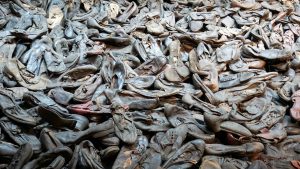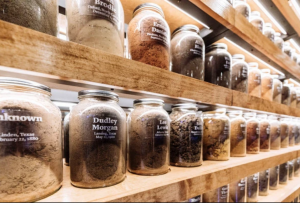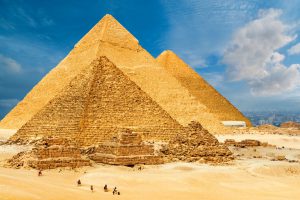This past week in class, we talked about the way in which archaeology can help people reflect on trauma and suffering of the past. I’m interested in the way archaeological records are employed in museums and memorials to emphasize past sufferings. An example that we talked about was Holocaust museums and how the collections of the items can invoke empathy and understanding about the sheer horror and quantity of that horror that happened half a century ago. What Edward Rothstein of the New York Times calls the “archaeology of trauma” can be seen in
Holocaust museums across the world (Rothstein). Special effects and simulations, and, more so on the archaeological front, collections of artifacts from the 6 million Jews who were murdered (United States Holocaust), work together to give a museum visitor an intense experience. Other memorials might list all the names of the people who lost their lives, if such records exist and are known. Growing up in Jewish day school for ten years, I’ve been to my fair share of Holocaust museums and memorials. I can say as a first hand spectator that looking at piles and piles of clothes, shoes, suitcases, jewelry pieces, or other various personal belongings from the archaeological record of the Holocaust shakes a person to the core. It gives you the physical objects to visualize the scale of the trauma and is incredibly effective at doing so.
Following the discussion of this topic in class, I became curious about how we then create this reflection on trauma if little remains from the archaeological record. What if there are no artifacts? No suitcases? No shoes? Nothing to point to the atrocity

At the National Memorial for Peace and Justice. There are names and places of those murdered written on the bottoms of the hanging concrete blocks.
that happened? These questions led me to The National Memorial for Peace and Justice. This memorial, opened recently in 2018 and inspired by the Berlin Holocaust memorial, serves as a memorial for African American people who were murdered by lynching in this country throughout history (Robertson). This memorial / museum “embarked on a project to memorialize this history by visiting hundreds of lynching sites, collecting soil, and erecting public markers” (EJI). The memorial displays this collected soil, along with the names of those murdered and evocative art pieces that emphasize the historical racial injustice of this country. While we may not have the
most personal belongings of every person who was a victim of racial violence, we do have access to art, to names, and to the soil: the soil that was underneath when these murders happened. They provide the context for the history that happened. We can look at that soil and feel the horror of what it witnessed. The art provides our narrative. We can look at the art and feel the pain of what happened. I’ve been brought up with the understanding that objects are what gives a historical event its weight, but perhaps we should rethink that definition. Doing so might stop the erasure of historical trauma that cannot always be articulated through objects.
Additional reading on this topic:
For the Equal Justice Initiative’s piece and video about why building this memorial was important, click HERE.
For more images and a look inside the memorial, click HERE.
Sources Cited:
2018 EJI. The National Memorial for Peace and Justice. Electronic Document, https://museumandmemorial.eji.org/memorial , accessed November 19, 2018.
Robertson, Campbell.
2018 . NYTimes. A Lynching Museum is Opening. Electronic Document, https:/www.nytimes.com/2018/04/25/us/lynching-memorial-alabama.html , accessed November 19, 2018.
Rothstein, Edward.
2012 . NYTimes. Holocaust Museums in Israel Evolve. Electronic Document, https://www.nytimes.com/2012/09/05/arts/design/israels-holocaust-museums-evolve-in-message-and-methods.html , accessed November 19, 2018.
2018 United States Holocaust Memorial Museum. Documenting Numbers of Victims of the Holocaust and Nazi Persecution. Electronic Document, https://encyclopedia.ushmm.org/content/en/article/documenting-numbers-of-victims-of-the-holocaust-and-nazi-persecution , accessed November 19, 2018.
Image sources:
Holocaust museum shoes – http://solotravelgirl.com/solitude-and-reflection-in-the-u-s-holocaust-memorial-museum/
National memorial for Peace and Justice – https://massdesigngroup.org/work/national-memorial-peace-and-justice
Jars of soil – https://www.nytimes.com/2018/04/25/us/lynching-memorial-alabama.html




